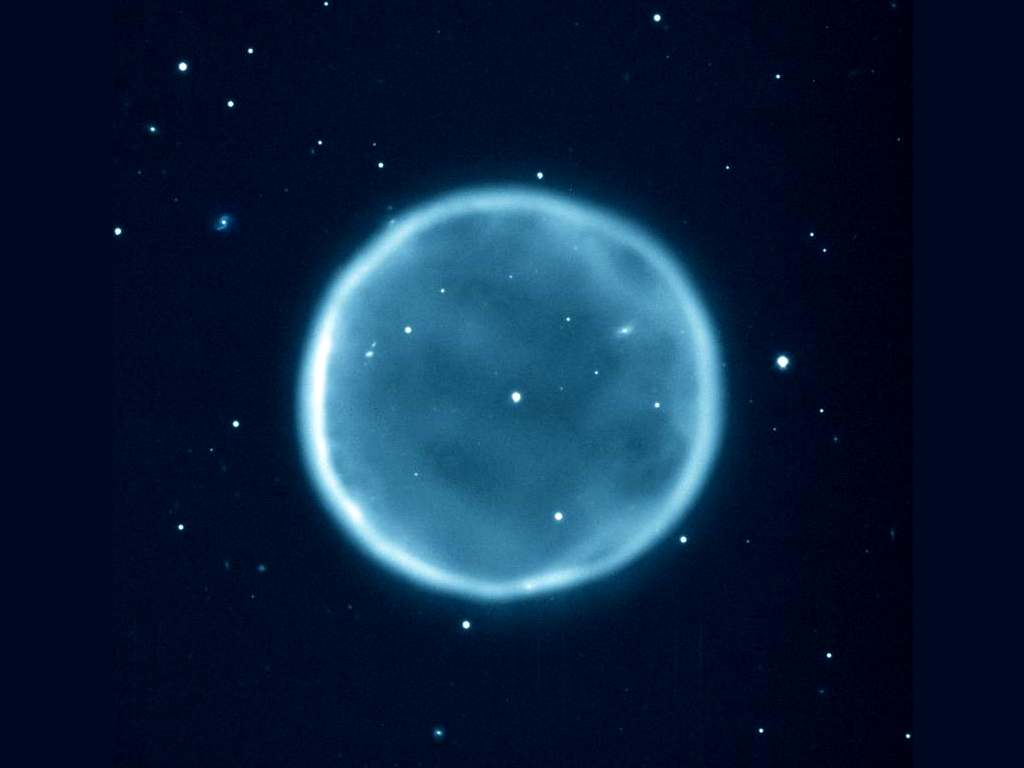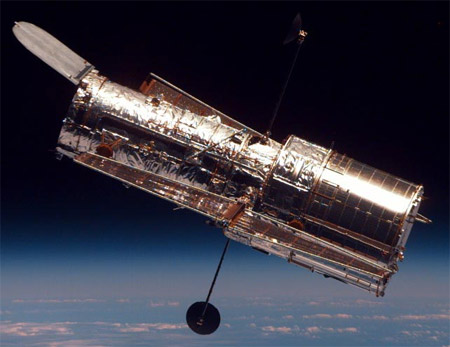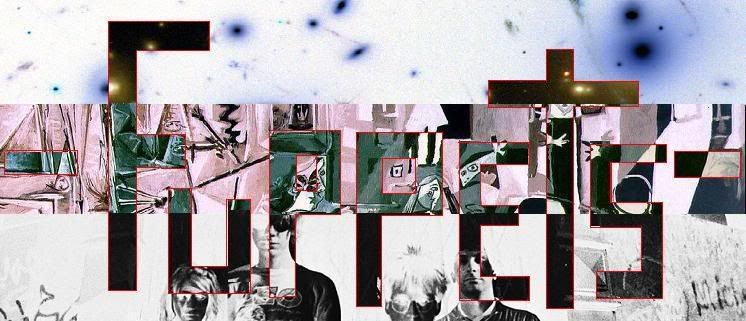Feb 25, 2011
Ode to the Space Shuttle
Goddamnit -FUPPETS- loves the Space Shuttle. -FUPPETS- remembers grade school in Puerto Rico and being pulled out of class to see the Space Shuttle Columbia's exhaust trail as it arced into outer space. It is easy now for people to take the fleet for granted, even with the multiple tragedies, because the shuttles were and are so amazing. They made space travel seem easy, simple even. The successes of the fleet such as the International Space Station, the Hubble Space Telescope and our current technological revolutions have made everyone forget how amazing it is to go into outer space. There have been less than 600 HUMAN BEINGS to leave our atmosphere!!!! EVER! FUCK! That is amazing and under appreciated. There are over 6 Billion people currently alive. There have probably been several dozen-Billion Homo Sapiens creatures crawling upon the face of our Earth. Only several hundred have ever left the safety of our atmosphere. They join the company of several dozen monkeys, dogs, mice, and assorted small creatures who have experienced what it feels to leave Mother Earth. -FUPPETS- hopes that this is not lost on the government and those in power as they plan the next fleet of vehicles to further the human expansion into Space.
On February 24th the Space Shuttle Discovery launched for the final time. It is a sad time for -FUPPETS- and all space nerds worldwide.
Feb 24 2011 - Final Shuttle Launch, Space Shuttle Discovery
Feb 2, 2010
Asteroid Collision Caught By Hubble Space Telescope
Our Solar System has a band of rocks and debris termed the Asteroid Belt, which is located between the orbits of Mars and Jupiter. In this belt there exist countless millions of rocks and aggregate boulders, each spinning around our Sun in their own orbit. Oftentimes, these asteroids glance off of one another, disrupting their orbits. Recently there has been much talk about near-Earth asteroids tracked by NASA and other space agencies. These asteroids all come from the asteroid belt, and are knocked off their orbits and toward our planet's orbit, by collisions such as the one captured by the Hubble.
On January 25th and then again on the 29th, the Hubble Space Telescope captured this striking image. (click image to enlarge)
Below is the close-up of the image. (click image to enlarge)
What appears to be a drooping "X" shape on the left of the image is the end result of the collission.
Astronomers have long thought the asteroid belt is being ground down because of collisions, but such a head-on crash had never been seen before.
"If this interpretation is correct, two small and previously unknown asteroids recently collided, creating a shower of debris that is being swept back into a tail from the collision site by the pressure of sunlight," said principal investigator David Jewitt, from the University of California at Los Angeles.
At first, astronomers thought what they saw might be a main belt comet, a rare case of a comet orbiting while in the asteroid belt.
But the images taken by Hubble revealed the complex X-pattern of filamentary structures near the object's nucleus.
Jewitt said the filaments are made of dust and gravel. Some of them are being swept back by radiation pressure from sunlight, creating the long, straight dust streaks, he said.
The nucleus of the presumed boom is 460 feet in diameter, NASA said. ( CNN )
Even with the relatively crowded asteroid belt's many inhabitants, capturing an image of a collision is an amazing feat. -FUPPETS- continues to be astounded by the magnificence of the human scientific endeavor.
Can you imagine being asked to point out something just 460 feet in diameter from about 2.7 AU away?
Dec 8, 2009
Farther in Time and Distance Than Humanity Has Ever Seen!
One of the most astounding accomplishments of the Hubble were the images called the Hubble Deep Field and the Ultra Deep Field images. These images were taken in 2004 by pointing the Hubble at what appeared to be a relatively empty region of deep space, zooming in, then finding the emptiest part of that deep image, and zooming in yet again. What was found blew the world's mind. More galaxies! Insanity! The Universe is so vast, so confoundingly enormous, that nothing in our human-scale set of reference points can help us visualize it properly. This is the Ultra Deep Field Image.

The first image above was taken this year, at a distance correlating with a time just 800-900 million years after the Big Bang. WOW! (Click on the top image to see the LARGE version. Galaxies, island universes all, abound.)
The photo was taken with the new WFC3/infrared camera on Hubble in late August 2009, during a total of four days of pointing for 173 000 seconds of total exposure time. Infrared light is invisible to the human eye and therefore does not have colours that can be perceived. The representation is "natural" in that shorter infrared wavelengths are represented as blue and the longer wavelengths as red. The faintest objects are about one billion times fainter than the dimmest visible objects seen with the naked eye. - ( Science Daily )
That means that over four days they created a 47 hour exposure! That is some super-faint light! The red-shift on these is immense. To imagine the awe that would be felt by someone such as Copernicus, or even Albert Einstein at these magnificent images. These images say far more about the wonder, skill, and glorious beauty of humanity than most people give them credit for.
-FUPPETS- says LONG LIVE SCIENCE!
May 13, 2009
The Space Shuttle Heads Out For One Final Hubble Space Telescope Repair Mission



The HST orbits around the Earth 350 miles above, and today is the day that the SS Atlantis will catch up to the HST, latch onto it with the shuttle's robotic arm, and prepare for the mission.
McArthur will use Atlantis' robot arm to pluck the 13-ton observatory from orbit and anchor it onto a work platform in the shuttle's cargo bay.
Five consecutive days of spacewalks will follow to equip Hubble with two new science instruments, six positioning gyroscopes, batteries and fresh thermal insulation.
Astronauts also will attempt to revive two broken cameras, one of which is needed to probe the atmospheres of planets circling in other solar systems.
"On this mission, we're going for broke," said Hubble project scientist David Leckrone. "We set the bar extraordinarily high for ourselves." - ( News Daily )
While -FUPPETS- loves that NASA decided to fund one more mission to repair the aging space telescope, it saddens one to imagine that this is it. There will be no more repair missions and once the HST finally dies, it will degrade it's orbit and burn up in our atmosphere. That will be a sad, sad day of mourning for anyone who has ever enjoyed the beautiful images brought to Earth by humanity's greatest scientific instrument ever, and a terrible day for all the scientists and researchers that rely on the HST for their source material.
Even the shuttles themselves are set to be retired in less than 2 years, once their 8 scheduled missions to the International Space Station are completed. Let us hope that whatever space vehicles are being developed are as valuable and efficient as our space shuttle fleet has been. Space travel, even in low orbit, is a very risky proposition, and never taken lightly. The shuttles we have lost, the Challenger and the Columbia, and the scientists/engineers/astronauts manning them, were lost in the line of duty to humanity. It has been almost 30 years since the first shuttle flight, and the future still looks bright.
NASA hopes that with the upgrades Hubble, which has cost about $10 billion so far, will last until at least 2014, at which time its replacement, the infrared-sensitive James Webb Space Telescope, should be in orbit and operational.
Apr 8, 2009
Galaxies Rule All
The globular clusters in NGC 7049 are seen as the sprinkling of small faint points of light in the galaxy’s halo. The halo – the ghostly region of diffuse light surrounding the galaxy – is composed of myriads of individual stars and provides a luminous background to the remarkable swirling ring of dust lanes surrounding NGC 7049's core. Globular clusters are very dense and compact groupings of a few hundreds of thousands of stars bound together by gravity. - ( Science Daily )
What appears to be a smoke/fuzz/glow is the light of millions upon millions of individual stars. Amazing!
This image was taken by one of the many cameras on the Hubble Space Telescope, specifically, the Advanced Camera for Surveys.
Mar 19, 2009
Saturn's Moons In Transit
Click on the image below to open up a narrated movie describing the transit as it takes place.
Mar 4, 2009
Galaxies In Collision
It is sometimes hard to grasp just how incredibly large a galaxy is, much less the entire Universe. An average galaxy can contain over a billion individual stars, and most galaxies are constantly creating new stars which coalesce from the massive clouds of interstellar dust. As far as current estimates go, there are likely over a trillion galaxies in our observable universe. This is an amazing amount, and the human brain does not have the ability to fully comprehend such large numbers.
Galaxies have life cycles too. Even though the distances between stars is vast, the distances between individual galaxies are exponentially larger. It is rare to see galactic collisions, but the Hubble Space Telescope has found many. Our own Milky Way galaxy is rushing towards the Virgo Galactic cluster, and in a billion years or so will be actively "colliding" with the cluster. This is what is happening in the image above. (Click image above to enlarge.)
The Hubble Space Telescope has captured the above image of three different galaxies in the middle of a collision. Even though scientists term this a collision, it is very rare indeed that any two individual stars would actually crash into each other, the distances between them being so vast. It is like having two people blow smoke at each other. The smoke particles would intermingle and affect each other but would likely never actually touch. In galactic collisions the same is true. However, the gravitational pull of all the stars and the galaxies collective gravitational power do affect each other. For example,
The three pictured galaxies — NGC 7173 (middle left), NCG 7174 (middle right) and NGC 7176 (lower right) — are part of the Hickson Compact Group 90, named after astronomer Paul Hickson, who first catalogued these small clusters of galaxies in the 1980s. NGC 7173 and NGC 7176 appear to be smooth, normal elliptical galaxies without much gas and dust.
In stark contrast, NGC 7174 is a mangled spiral galaxy, barely clinging to independent existence as it is ripped apart by its close neighbours. The strong tidal interaction surging through the galaxies has dragged a significant number of stars away from their home galaxies. These stars are now spread out, forming a tenuous luminous component in the galaxy group. - ( Science Daily )
The gravity of the large elliptical galaxies is effectively ripping apart the barred spiral galaxy. Scientists expect this process, which will take hundreds of thousands, if not millions of years, to create a massive galaxy, tens of times bigger than our own Milky Way. If only we could create a time-lapse camera that could capture the entire process. It would look something like this.
Feb 6, 2009
NGC 4921, In The Coma Galaxy Cluster


Barred Spiral Galaxies have one large "bar" which begins forming a spiral at it's two ends. This one is rotating clock-wise as seen from our planet Earth.

Elliptical Galaxies have a nearly uniform shape, and the brightness from all it's stars seems to come from the entire galaxy, which is not divided into arms or spirals.

The galaxy at the top of this post is in the Coma Cluster and is a very rare type of spiral galaxy, and very beautiful. Click here for more information about it.
"It is an example of an "anaemic spiral" where the normal vigorous star formation that creates a spiral galaxy’s familiar bright arms is much less intense. As a result there is just a delicate swirl of dust in a ring around the galaxy, accompanied by some bright young blue stars that are clearly separated out by Hubble’s sharp vision. Much of the pale spiral structure in the outer parts of the galaxy is unusually smooth and gives the whole galaxy the ghostly look of a vast translucent jellyfish." - ( Science Daily )Take a look at the top image. Notice the dozens upon dozens of other galaxies far in the background! They are everywhere! We are magnificently inconsequential.
Oct 30, 2008
The HUBBLE Space Telescope LIVES!!!!
In order to celebrate this tricky achievement, the scientists controlling Hubble aimed it's camera at an object in the sky called Arp 147. Check out this beautiful image.

The scientists called this a "perfect 10." The image is of two interacting galaxies. Here is the description from Space.com .
In the image, a galaxy at left looks somewhat like the number "1" and is relatively undisturbed, but for a smooth ring of starlight. It appears nearly edge-on to our line of sight. A galaxy at right, looking like a "zero," exhibits a clumpy, blue ring of intense star formation.
The blue ring was formed after the galaxy on the left passed through the galaxy on the right. Just as a pebble thrown into a pond creates an outwardly moving circular wave, or ripples, an outwardly propagating ring of higher density was generated at the point of impact of the two galaxies, astronomers explained. As this excess density collided with outer material that was moving inwards due to the gravitational pull of the two galaxies, shocks and dense gas were produced, stimulating star formation.
The dusty reddish knot at the lower left of the blue ring probably marks the location of the original nucleus of the galaxy that was hit.
AMAZING!!!!! Arp 147 lies about 400 million light years away. The amount of time it must have taken for the galaxy on the left to pass through the galaxy on the right is immense. It is almost unfathomable. What a beautiful instrument the Hubble is. We are lucky, lucky humans. -FUPPETS- is impressed.
Sep 25, 2008
-FUPPETS- Loves Planetary Nebula










Aug 21, 2008
-FUPPETS- Science Video Of The Day
The Universe around us appears to be the same in all directions. The distribution of galaxies is the same, statistically, anywhere you choose to look. Astronomers wanted to see just how crowded the universe is, so in 2003 they chose a tiny part of the night sky, seemingly empty according to all the current data of the time, and pointed the Hubble Telescope at this area.
The area covered in this image, soon to be called the Hubble Deep Field Image, covers a speck of the sky only about the width of a dime held 75 feet away from you. That is a tiny, teeny sliver of sky.
When the data from the Hubble arrived, the entire world was astonished to see that, in a part of the Universe considered nearly empty, there were over 1,500 galaxies of varying sizes and shapes visible! It is hard to overstate just how much of a mind-blowing image this was and is.
This is the Hubble Deep Field Image. (click to enlarge)

The Universe itself is much much larger than what scientists refer to as the "observable universe." This is due to the very early moments of the Universe, in which spacetime expanded faster than the speed of light, so that there are whole parts of the universe that, still expanding, are never close enough for their light to have reached us, and never will be. The oldest light we can see is around 14 billion years old. The galaxies in the Hubble Deep Field image are around 13.5 billion light years away. In other words, the photons that are entering the Hubble telescope's lens and camera left their galaxies nearly around the time the universe came into existence. They have travelled through empty space for over 13 billion years and ended their journey on the Hubble's photo-receptors. Below is a great video explaining and describing the Hubble Deep Field Image.
Soon after the scientists aimed the Hubble at a different "empty" area in the southern hemisphere and imaged the Hubble Deep Field South Image.

Soon after the Hubble Telescope took what is the most detailed, furthest from earth image ever taken. It is called the Hubble Ultra Deep Field Image. Click here to check this out. Everywhere we humans look we see more galaxies, thousands and tens of thousands more, each with billions upon billions of stars. It is truly an inconsequential, tiny speck of the universe in which the whole of humanity exists. Insane but true.
Aug 8, 2008
FIX the Motherfucking HUBBLE!!

Keep that shit running! How else are we to get such amazing fucking images?????




The repairs are going to be a GRADE-A BITCH. The Hubble Telescope was designed to be repaired and to have easy access for removal and replacement of various components, but the main part that needs repair on this flight cannot be removed and has to actually be repaired in outer space, as the astronauts fly around the earth at faster than 20 thousand miles an hour. Fucking insane! Best of luck you goddamn bad motherfuckers!







